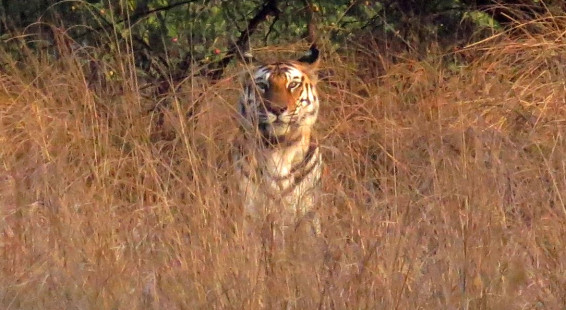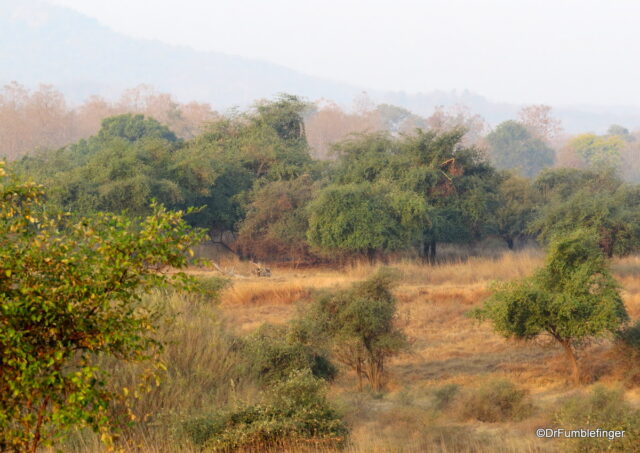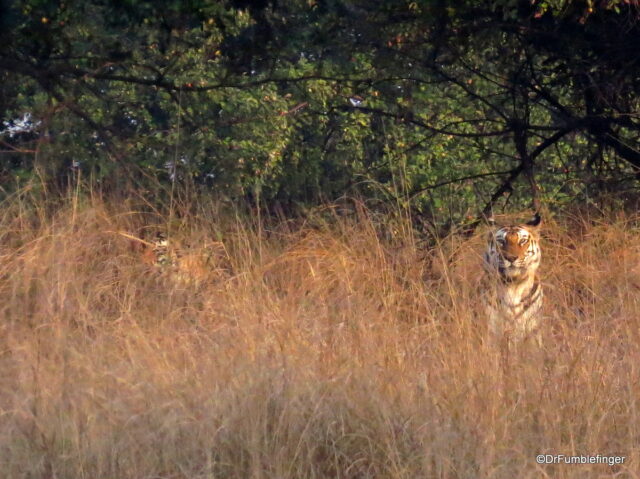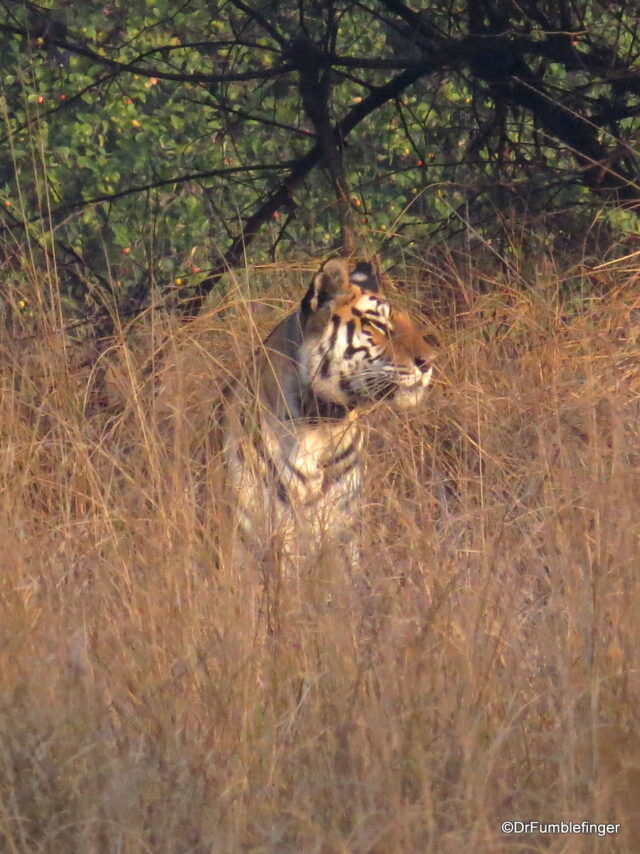
It’s a rough bumpy 45 km ride from Khajuraho to the Panna Tiger Reserve — but it turned out to be very worthwhile.
A Brief Background of the Panna Tiger Reserve
The Panna Tiger Reserve is part of Panna National Park, which is a large swath of nature in one of the world’s most densely populated countries, having an area of 542.67 km2 (209.53 mi2). The reserve has grass habitat with extensive open woodlands, and plateaus punctuated by gorges. Life here depends on the Ken river and its tributary streams, which sustain everything you see. The area was declared a Biosphere Reserve in 2011.
India has the world’s largest surviving tiger population. In 1993 Panna was declared India’s twenty-second Tiger reserve and placed under the Protection of Project Tiger. Sadly, by 2009, the park’s entire tiger population had been eliminated by poaching (with the collusion of forestry officials).

Panna Tiger Reserve
The lack of tigers was quickly addressed. Several couples of male and female tigers were reintroduced in the following years and there has been a rebound of the tiger population in Panna Park. Currently it’s estimated the park has about 40 – 50 tigers.
A Tiger Safari
A downside of going on safari is that you need to get up well before dawn to get to your game preserve. The best wildlife viewing is always just after dawn or just before dusk, as the wild animals are most active then. The upside, of course, is that this is when you’re most likely to spot what you paid a lot of money to be there for. So after some tea and biscuits at our hotel, we made the journey by open-air jeep — it was rather cold driving in the night air, even in warm country like India. We arrived at Panna just as the first rays of daylight began peeping across the eastern horizon.
We drove around park roads for several hours. During the first half hour, visibility and photography were limited by low light, but soon it became bright enough to take some decent photos. Below you can see some of the animals we spotted on our safari.

Blue Bull Antelope, Panna Tiger Reserve
Unquestionably the highlight of our adventure was to be our tiger quest. Around a dozen jeeps gather at a high point near where tigers had been spotted the previous night. Our guides were scanning the area with binoculars for several minutes before we saw them.

Tigers, Panna Tiger Reserve
Two tigers, youngsters (few years old). Both are in the photo above, one on the far left mostly hidden and one clearly looking our way (to our right of the other tiger in the photo). The tigers had spotted prey in the distance and worked their way through the brush. They disappeared for a few minutes, only to reappear near our jeeps. Unfortunately someone’s elbow was in the way so I didn’t get the best photos, but the tigers were quite close to us.

Tiger, Panna Tiger Reserve
The last time we saw this tiger was as it started to charge, moving quickly through the brush and disappearing. Shortly thereafter we heard a pig-like squeal and were told a boar had just been taken by the tiger. We never saw the kill and it wasn’t something I felt we’d missed out on. The pleasure of watching the tigers had been completely satisfying.
Bengal tigers sure are such beautiful animals. An absolute joy to watch.
While it was still fairly early, the tradition in India is that when a tiger is spotted, the safari is over. This makes sense, because everything else would have been anticlimactic after this encounter.
We stopped at a picnic area nearby for breakfast, before making our way back to our hotel and from there, on to further adventures in India.